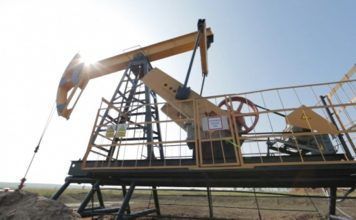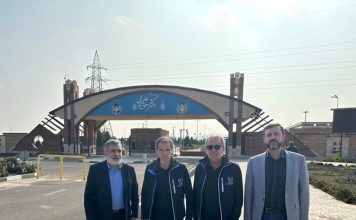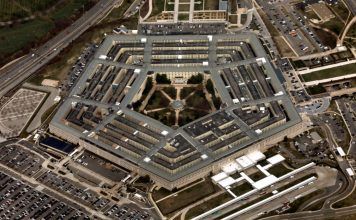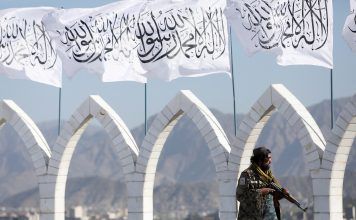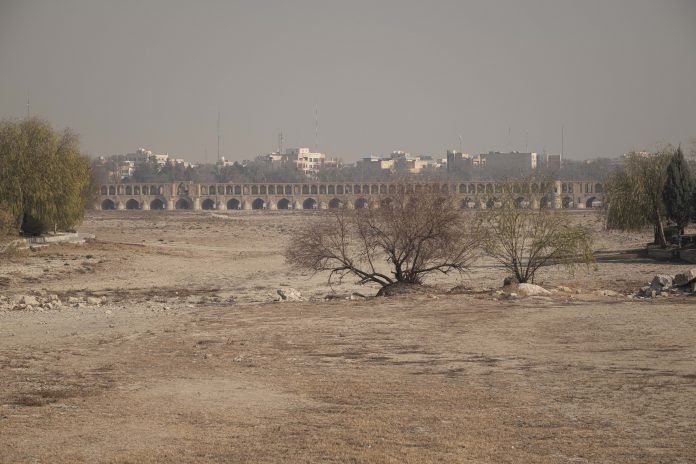
By Kayhan Life Staff
A total of 269 cities are facing water shortages across Iran, although emergency measures have prevented disruptions in the water supply, according to Hashem Amini, the spokesman for Iran’s Water Industry.
In an interview with the IRNA news agency, Amini said the Doosti dam in Mashhad was in a critical condition and the Nahand dam in Tabriz had completely dried up. He added that the underground waters of Zanjan and Tabas, as well as the Chahnimeha wells in Sistan and Baluchestan, were at risk of destruction. Chahnimeh refers to four large natural sinkholes in Sistan and Baluchestan province that receive surplus water from the Hirmand River through a channel and have become semi-dry this year.
Mohammad Zamanian, the head of the Research Institute for Seed and Seedling Improvement, announced that according to a report by the National Center for Climate and Drought Crisis Management, 97 percent of the country’s area was affected by drought, and that this critical situation was worsening.
Zamanian added: “Sustainable agricultural development and food security depend on the optimal conservation and utilization of the agricultural resources, namely water, soil, and genetic resources. Increased water consumption due to industrial development, expansion of irrigated and seasonal crop cultivation, increased urban and industrial consumption along with a growing population, climate change, and consecutive droughts have gradually reduced access to quality water in Iran and have affected the country’s agricultural sector in achieving food security.
There are reports throughout the country of crisis situations as regards the water supply.
Adel Peyghami, the CEO of Qeshm Free Zone, described the water situation on Qeshm Island as “tragic” on August 14th.
“The water supply to my house in one of Qeshm’s villages is connected only once every 60 days,” he said. “We are under extreme stress. The situation is more severe than Sistan and Khuzestan.”
“Here, people don’t have water,” he added. “It is an absolute shame that we were unable to provide water to the people. They told me not to be pessimistic. I said it’s not pessimism, it’s realism. I am representing an existing darkness. We will not abandon the water issue.”
“Forty-two villages on the island are facing extreme water difficulties,” he added. “The Water and Wastewater Company, ABFA, has a limited budget, and Qeshm is not the only problem in Hormozgan province. We have asked ABFA, which has a limited budget, to address the issues in other parts of the province and entrust the water problem of the city to the Qeshm Free Zone with the per capita funding allocated by the government for Qeshm. We will solve the water problem. Now, ABFA needs to make a decision. If they don’t, I will go to the legal department of the presidency, and I will state this matter openly.”
The website Tajarat-e-Farda, in a report titled “Decline of the Sacred Tree,” described the drought affecting the oak trees in the Zagros forests.
“The Zagros forest, a semi-arid region in western Iran, is the world’s largest oak forest, covering an area of more than five million hectares, with Iranian oak being predominant,” the website said. “In this forest, oak trees help conserve and regulate water resources, preserve soil, mitigate climate change, and improve the socio-economic conditions of human communities. The forest is rich in biodiversity and provides a habitat for numerous species. Since 2000, recurring droughts, especially in the Zagros forest, have led to a concerning death of Iranian oak trees.”
“Drought, as the most influential factor, reduces the rate of photosynthesis and annual growth, weakens trees, and makes them susceptible to fungal diseases and wood-boring insects,” the website added. “Signs of oak decline caused by drought have been observed in Iranian oak forests in recent decades.”
The Ham-Mihan daily reported that the levels of Lake Urmia in June were at their lowest since 1964, and that the water level in the lake reached 1,270 meters in the final days of August – below a level which was previously reported as being critical. The report added that the drying of Lake Urmia affects the lives and health of 6 to 15 million people and leads to respiratory diseases, migration crises, and environmental issues.
The report referred to an expert discussion on the subject titled “Review and Diagnosis of the Latest Situation of Lake Urmia.”
During the discussion, Mehdi Fasihi Harandi, a researcher in water governance, diplomacy, and policy, said: “As the numbers indicate, Lake Urmia has only 5 percent of its water, which means it is almost zero, and we will soon witness a crystallized basin that no longer has the potential to become a brackish lake. Talking about the Urmia Lake crisis is no longer meaningful, and the drying up of Lake Urmia is not just about water scarcity and drought. We realized very late that we did not pay attention to the surrounding community. We need to inform the local community about the problems caused by excessive water extraction. The main reason for the drying of Lake Urmia is the extraction of groundwater, and until and unless this problem is solved, we cannot reach a solution.”
Mohsen Mousavi Khansari, a member of the board of directors of the Sustainable Water and Soil Association of Iran, said: “The Lake Urmia Restoration Headquarters had halted the construction of some dams. However, under the current government, the construction of several dams have resumed. Given the present critical condition of these dams, this is a wrong move.”
During the session, Ehsan Houshmand, a researcher on ethnic issues, said that there had been a decision-making crisis in the country over the last few decades due to the lack of a national perspective in policymaking.
He listed “conflict of interest” and “narrow-mindedness” by government officials among the governance problems facing the country, and said that one of the critical results was the situation at Lake Urmia.
“A structure involved in corruption and conflicts of interest cannot efficiently identify its own problems,” he said. “Some of this corruption is related to supervision, and not limited to domestic and judicial institutions. It has been about 25 years since the Urmia issue became a public concern, but what has been done in these 25 years? This structural complexity is not something that can be defined over a 50-year horizon for the country’s resources to be allocated to it. Water transfers do not untie the knot. These are errors of expertise in the country. You create the illusion that water exists, so the existing process continues. But tensions arise later, in a region that is facing thousands of crises.”

